While I would like a blimp–or technically, a satelloon–on display,
I think I want to forgo the life-sized mannequin of myself. Thanks all the same. [via andy]
the making of, by greg allen
While I would like a blimp–or technically, a satelloon–on display,
I think I want to forgo the life-sized mannequin of myself. Thanks all the same. [via andy]
Agnes Varda, who’s DV mini-masterpiece The Gleaners was formative in my own decision to start making movies, tells Artforum:
I’ve been making films for so long, for over fifty years now, but I really think I have two paths of work–cinema and installation.
Varda talks about an installation opening at Harvard’s Carpenter Center, which was one of several shown previously at the Fondation Cartier.
500 Words | Agnés Varda [artforum.com]
Dan Fox, an editor at Frieze, has a long but excellent essay? article? exploration? of what it means to be a “professional artist.”
How should artists behave? How should we discuss art, build venues to show it in, tell people about it, try and support artists? There is no single answer: each situation demands a different solution. Perhaps, as we are hit daily with dire economic news, what is needed is to remain sensitive to the details, those small elements in the art world that cumulatively exert their own pressures on the ways in which people behave or relate to the making of art.
As my projects and interests have become increasingly some combination of quixotic, ridiculous, and conceptual, I’m left with the reality that the only rubric to justify their existence or realization is “art.”
But as someone who’s been wandering through the art and gallery and museum worlds for so long in the guise of anything-but-artist, I find defining myself as an artist to be problematic at best, mostly because of many of the issues Fox identifies: I’ve never sold a work. I don’t support myself through making or selling my work. I can barely imagine the idea of making saleable work [though if you’re in the market for a 100-foot satelloon, I’m sure we can work something out.] I was in a gallery show, but I don’t have or seek the external validation of an authoritative figure such as a dealer, critic, or curator. I’m an art history undergrad with an MBA where my MFA should be, and an art writer with a few NY Times bylines where my October credits should be.
If I were a “professional artist,” I’d immediately consider myself an abject failure, and my collecting, writing, fundraising, and curating reflexes would tell me to ignore my credential-less, dilettante-ish loser self.
So no, even with the art market evaporating like dew in the morning sun, I’m not too sanguine yet with the definitional aspects of being a professional artist. Still, good reading.
A Serious Business | What does it mean to be a professional artist? [frieze.com via c-monster]
Just because I haven’t yet doesn’t mean I won’t eventually throw out the April 2008 issue of Bookforum on which I scribbled down the following notes last night [ex post facto additions in brackets]:
Eliminate the object of perception and make perception the object
What some people call illusion = “hypothetical space,” [like the guy flying by you on the freeway at 70mph, chatting on his phone, is inhabiting a different hypothetical space than you–for all the good that’d do either of you in a crash]
Ed Wurtz biofeedback, train astronauts to lower heart rate [?]
[People always say] artists experiment, but art is a statement about some thing.
Turrell lawsuit, wife Supreme Court Justice of Oregon – lost [gonna research this one]
Space division [one of his bodies of work]
touch with your eye [a lot of discussion of the interplay between senses]
plumbing of vision
feeling of space
penetration with the eyes [so it’s not just a single moment of realization, but an exploration and gradual understanding, i.e., perception]
[conservative grandmother, “not like those liberal Philadelphia Quakers”]: “Go inside–meaning inside here, yourself–and greet the light.”
Bring the cosmos down into our territory [objective of Roden Crater]
Gathering light [from stars, not reflected light from the moon or any planets] that’s older than the solar system itself [and then comparing it sculpturally/spatially/aesthetically/experientially to other isolated, contained, gathered cosmic light sources/types]
Working on a cenote in the Yucatan [what up withat?]
[from taking a last train ride to Watts] where these towers are just waiting for us to see
[Simon Rodia] went to ____ near Guadelajara to work with Mexican tile craftsmen
Minnaert’s The Nature of Light & Color in the Open Air catalogue of optical phenomena [1954 book by that Dutch astronomer who got that weird, swampy, cavelike physics building in Utrecht named after him in a big way.]
From the Google Books preview, a plate titled, “The Heiligenschein on meadows covered with dew”:
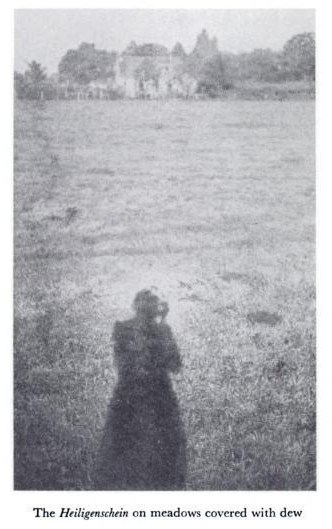

I’ve been all ’round this great big world, and I’ve seen all kinds of Turrells, so I couldn’t wait to get to the Hirshhorn last night for the sweetest Turrell lecture in the world.
What a horrible opening. Turrell and Richard Andrews, who’s now running Turrell’s foundation to complete the Roden Crater, spoke about the artist’s work last night, building up to several reveals about the progress and program of the Crater itself.
Encountering a Turrell work almost always involves a moment of realization–yes, someone did call it an “Aha! moment” last night–that the solid-looking object or space you’re looking at is, in fact, light. And the artist told a few funny stories–well-polished like a favorite stone he carried around in his pocket–about getting sued by a woman who leaned against the wall “that wasn’t there”; the reviewer who dismissed a piece at the Whitney as “uniformly painted”; and the viewer who leapt into that same piece because she thought it was solid, which makes no sense if you think about it, but it’s funny nonetheless, and we all laugh knowingly, which is the artist’s point.
 I remember parking myself in MoMA’s A Frontal Passage when it was first installed, watching peoples’ reactions in the dark as they “got it.” Of course, more than once, what surprised them was that there was someone lurking in the dark space with them, and a couple of people freaked when I moved because they thought I was a sculpture. The Observer Effect apparently applies to Turrells as well.
I remember parking myself in MoMA’s A Frontal Passage when it was first installed, watching peoples’ reactions in the dark as they “got it.” Of course, more than once, what surprised them was that there was someone lurking in the dark space with them, and a couple of people freaked when I moved because they thought I was a sculpture. The Observer Effect apparently applies to Turrells as well.
I’ve always felt that there had to be more to Turrell’s work than the Aha moment, the threshold when you realize what you’re seeing–or to use the artist’s favored term, perceiving. Andrews told a story of turning a whole floor over to Turrell for what, he didn’t know, at the about-to-open CoCA in Seattle in 1982. A whole team of volunteers worked feverishly for weeks, not knowing what the piece would really be, and then Turrell hit the switch, and “Aha!” But of course, it was no surprise for Turrell himself; he had known what he was working toward. He’d seen it in his mind, and had only to construct it.
The artist himself was toggling, then, between an awareness of the tangible state of light and the awe of the moment or process of perceiving it. Even as he said outright, “I am not your guru,” the religious terminology peppering the discussion–koans, “taking it on faith,” enlightenment, revelation–seemed entirely appropriate.
When he got to the slides of his Quaker meetinghouses, Turrell recalled the instructions his conservative Quaker grandmother had for attending a silent, meditative service: “Go inside–meaning inside yourself–and greet the light.” It was a tall order for a fidgety little kid, but given how clearly it resonates with the experience of Turrell’s work, it clearly stuck. What else is clear, though is that Turrell sees a greeting for what it is–the beginning of a conversation. [images, greg.org, c2009 james turrell via moma]
G — He is an archeologist and an anthropologist. A Ph.D. He’s a doctor, he’s a college professor. What happened is, he’s also a sort of rough and tumble guy. But he got involved in going in and getting antiquities. Sort of searching out antiquities. And it became a very lucrative profession so he, rather than be an archeologist, he became sort of an outlaw archeologist. He really started being a grave robber., for hire, is what it really came down to. And the museums would hire him to steal things out of tombs and stuff. Or locate them. In the archeology circles he knows everybody, so he’s sort of like a private detective grave robber. A museum will give him an assignment… A bounty hunter.
S — If there were these Arabs who just discovered some great king’s tomb, and you see the tomb being taken out. And there are about twenty five or thirty Arabs heavily armed, and like five trucks and you realize… there’s this one guy who’s all painted, and he’s one of the pall bearers who slips a thing into the back of the truck, gets behind the wheel and as the caravan is going to turn right, this one thing goes left. And the rest chase him, but he gets away.
G — The thing is, if there is an object of antiquity, that a museum knows about that may be missing, or they know it’s somewhere, he can go like an archeologist, but it’s like rather than doing research, he goes in to get the gold. He doesn’t really go to find cheap artifacts, he goes to gather stuff. And the other thing is, if something was taken from a tomb, stolen and sort of in the underground, sometimes they may send him out to get it. Essentially he’s a bounty hunter. He’s a bounty hunter of antiquities is what it comes down to.
If a museum says that there is this famous vase that we know exists, it was in this tomb at this time. It may still be there, but we doubt it. We think maybe it’s on the underground market, or in a private collection. We’d like to have it. Actually it belongs to us. We’re the National Museum of Cairo or something. He says okay and tracks it down.
if its not in the thing, he finds it, finds out who’s got it. And he swipes it back. A lot of times it’s sort of legal. All he has to do is get it. It’s not like he steals things from collectors, and then gives them to other collectors. What he does is steal things from private collectors who have them illegally, and gives them back to the national museums and stuff. Or, being that his morality isn’t all that good, he will go into the actual grave and steal it out of the country and give it to the museum. It’s sort of a quasi-ethical side of that whole thing. The museum does commission somebody to go into the pyramids and you know, whatever they find, sort of get out without the Egyptian government knowing, because they were in the process of turmoil and nobody’s going to know anyway and there’s not going to be any official protest, so just do it…
A discussion of the finer points of museum ethics and antiquities collecting from the 125-page, 1978 transcript of George Lucas, Steven Spielberg, and Lawrence Kasdan’s story conference for Raiders of the Lost Ark [via waxy]
Besides, obviously, Christopher Wool?

Pet Shop Boys – Love Etc. (HD) [youtube via andrew sullivan]
For the moment, “Love etc.” is playing largest on the PSB’s homepage [petshopboys.co.uk]

We’re out of town with family all weekend, so we’ll miss the art fair circuit. Which is too bad because my brother-in-law Benjamin Cottam is showing some work at Volta.
In addition to ‘landscapes’ and ‘blue skies’ paintings [hopefully not the one I called dibs on in his studio a few years ago], there will be some new additions to his various series of tiny–almost trading card-size!–silverpoint portraits. Above, from ‘dead artists’: Andy Warhol, 2002.
Over the holidays, I taped an interview with my great uncle Wayne. He is my paternal grandfather Champ’s older brother. [Yes, I did ask him about my grandfather’s name. His recollection was that my great grandfather Chester Jehiel Allen hated his own name so much, he was determined to give his kids one monosyllabic name apiece. But that’s not the point right now.]
Wayne told me as a young man growing up in central Utah, my grandfather had worked for the Civilian Conservation Corps. The CCC was one of the most successful Depression-era jobs programs; it put hundreds of thousands of men, mostly from rural areas, to work building roads, dams, bridges and national park fixtures, and doing other construction-type projects.
I’ve been surfing around on the history of the CCC in Utah, trying to get a sense for what his experience was like. From newsletters archived by the Utah State Historical Society, it sounds like it was run in a quasi-military style, with camps and barracks and ranks; it’s hard to imagine my grandfather fitting in well.

The USHS also has several collections of photographs taken by CCC members, though I couldn’t find any yet from the camps or periods Champ served. The photos show camps or the projects: structures in remote desert landscapes lacking any readily identifiable landmarks. Gabions and walls and foundations of stone in the middle of the desert. Not just bridges to nowhere, but bridges to, from, and in nowhere. Some of them unexpectedly reminded me of Earth Art sculptures.

Ashley A. Workman served in the CCC for seven years, 1934-41, in ten different camps. This undated, unsited photo from his collection of “some type of CCC bridge construction project.” What else could a minimalistic geometric structure, stripped of time, place, context, and utility be but a sculpture? [here’s another view of it.]
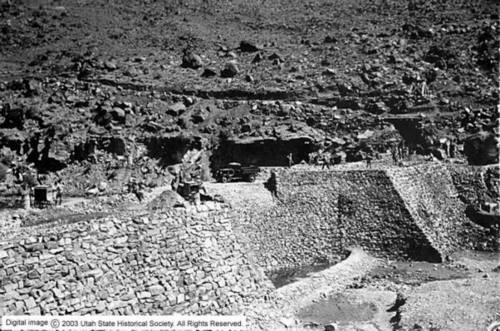
We know where Lamar Peterson took this photo, “”Dam on Santa Clara River, Shivcoit Indian Reservation,” [actually, I believe that should be Shivwits, a band of the Paiute tribe] but it still looks like it could be part of Michael Heizer’s City.
I have no idea what Heizer, Robert Smithson, Walter deMaria, or any other earthworks artists thought or said about projects like the CCC’s. Maybe nothing at all, ever. We see these historical works from the other end of the temporal telescope now, but did they look different to people encountering them for the first time in the 1960’s and 70’s?
When these artists began conceiving massive sculptural interventions in the remotest desert landscapes they could find, the country was only a generation removed from the Depression. I expect there was a much greater general cultural awareness of the CCC and its built legacy. And then there’s the post-war construction and baby boom that saw American families taking cross-country roadtrips to national parks via new interstate highways.
If anyone’s seen Earthworks discussed well from this historical and aesthetic context, I’d love to know about it. And if anyone’s then looked even further back, with contemporized eyes, to explore the production of pre-minimalist and pre-Earthwork objects, I’d definitely love to know about it, too.
Images 2 of 1455 CCC photos in the Utah State Historical Society Collection [lib.utah.edu]
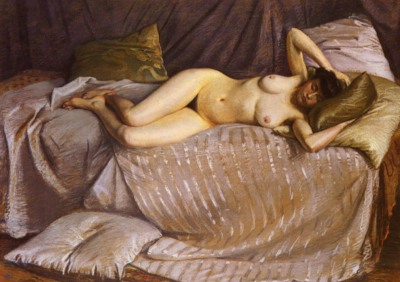
The Metropolitan Museum will get its first painting by Gustave Caillebotte, courtesy of collector/patron Iris Cantor, who made a promised gift of the painting, Femme nue étendue sur un divan, “as a tribute to former museum director Philippe de Montebello.”
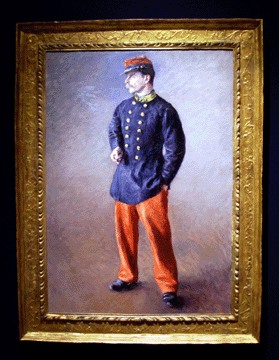
Who was the guy who let their last Caillebotte get away. The museum had been showing Caillebotte’s Un Soldat [above] from 1983 until 2002, when the actual owner, Sam Josefowitz, the Swiss book & record club magnate whose son Paul publishes Apollo magazine, sold it at Christie’s for $6.4 million.
While Femme nue has its undeniable charms, multiple viewings of it as an impressionable art history student didn’t make me want a pair of red pants. The vintage military jacket, on the other hand, was Adam Ant’s fault.
Awesome, I just read through the announcement of the 2008 Arts Writers Grant recipients, and I have to give a huge shoutout to Paddy Johnson whose Art Fag City is one of the first two blogs to be recognized by Creative Capital and the Warhol Foundation [the other is Guerrilla Glass, a “post-glass art” blog project by Anjali Srinivasan and Yuka Otani.]
The Arts Writers program has danced around the new media for three grant cycles now, but this is the first time their solicitation explicitly mentioned blogs. Needless to say, it’s about time, and Paddy’s project is highly deserving and should lend the Arts Writers program some nice publicity and online cred.
Which is ironic, since the reason I applied for a grant last cycle was to leverage CC’s and the Warhol Foundation’s credibility for what would otherwise have to be seen as a cockamamie scheme. I had proposed a blog about the art history of satelloons. The idea was to consider NASA’s Project Echo inflatable satellites–instantly obsolete but spectacularly beautiful mylar spheres which were visible to the naked eye–as an exhibition, a propagandistic and aesthetic exercise akin to the US government’s better-known Cold War-era promotion of Abstract Expressionism abroad.
That would give me the impetus to research and document the development and history of the satelloons from primary source material. But it would also be a stepping-off point to explore the history of art and politics in the Space Age, Pop and Minimalist contexts; the history of art and technology collaborations, including the artists who worked with Bell Labs, a key Project Echo participant. [I especially wanted to see if I could trace the use of mylar balloons from Project Echo through Bell Labs’ black box to Andy Warhol.] By looking at scientifically driven production from an art world vantage point, the satelloon blog would question the defining premises of art, especially intentionality and the aesthetic experience of the viewer. It’s all stuff I will probably pursue here with slightly less urgency over the next year or so.
Just as it was reassuring to see Paddy’s excellent writing recognized, it made me feel slightly less marginal that at least two other grant recipients have projects that resonate with my satelloon idea, if not quite overlap. Art historian Douglas Kahn was awarded a grant for Arts of the Spectrum: In the Nature of Electromagnetism, a book about an intriguing vein of art&science interplay. And Annette Leddy, from the Getty Institute, is writing an article on Robert Watts’ “Space Age Home,” an artist in the 1960’s who apparently “extensively re-imagined the home, its furnishings, and its gardens in terms of an ironic Space Age aesthetic.” No idea, but it sounds like the future to me. Or at least the history of the future.
see the full list of Arts Writer grant recipients and their projects [artswriters.org]
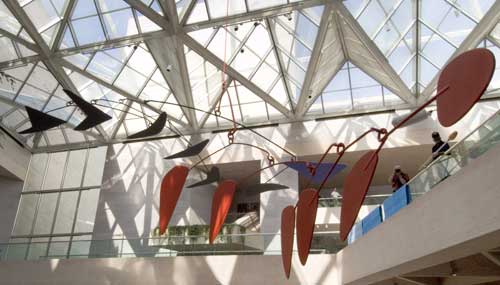 [via]
[via]
Or was it Blake Gopnik? Because Johnson’s review titled “From China, Iraq and Beyond, but Is It Art?” of the New Museum’s current show is so embarrassingly obtuse, it could almost be in the Washington Post.
At first, I assumed the headline was a fluke, the flip result of a lazy copy editor falling back on the most overrated, anti-intellectual straw man of the last hundred years of art world production.
And I was wrong. It’s the core of Johnson’s argument. The show, which I haven’t seen, is a series of works commissioned by three contemporary art museums–the New Museum, the MCA in Chicago, and the Hammer Museum in LA–under the Deutsche Bank-sponsored rubric of The Three M Project.
Here’s how it starts:
In recent years, museums have been getting into commissioning artists to create new works. It is a controversial practice. Some critics think that museums have enough to do just sorting out what already exists. Curators may argue that they are in the best position to identify promising artists and to make possible the creation of important works that might otherwise never be realized.
The problem is that you cannot know for sure what you’re going to get.
Johnson’s premise, false on its face, isn’t even the worst of it. Is he referring to any kind of site-specific installation or work created by an artist for a museum? Does Dan Flavin’s rotunda-filling installation that reopened the Guggenheim count? Siah Armajani’s bridge to the Walker Center? Calder’s mobile in the National Gallery? SFMoMA et al’s sponsorship of Christian Marclay’s Video Quartet? More than half of MoMA’s longrunning Projects series? I’m literally pulling examples out of the air right now. But in ten seconds, it feels like I’ve disproved Johnson’s claims of “recent” and “controversial,” and shown that the odds of “what you’re going to get” are not that terrible.
Again, having not seen the show, I have no opinion on the works myself. If Johnson’s point was that the works commissioned and seen there were bad, and that museums should leave the commissioning to corporations and collectors who know these things much better, that’d be fine. Idiotic and still demonstrably wrong, but fine. Instead, Johnson pulls out the big guns, the art critic’s WMD: saying that something is “not art.”
Of an installation about Urban China, a magazine edited by Jiang Jun which was included in the last Documenta, and which has been praised as “visionary” and which revolutionizes the perception of urbanism in China [a redundancy if ever there was one] through its innovative use of “raw graphic power”, Johnson sniffs: “All this is mildly informative but superficial. You won’t gain any very deep or revelatory insights about Chinese modernity. It isn’t really art, after all; it’s more like an overblown advertisement for the magazine.” [emphasis added on the wtf parts.]
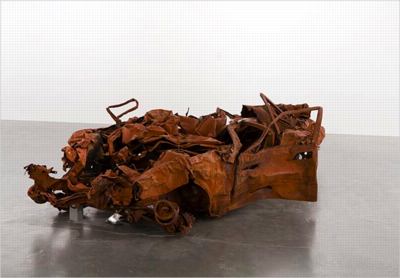
But the biggest critical bomb gets dropped, ironically, on the project by Turner Prize-winning artist Jeremy Deller, in which a stream of “guest experts” on the Iraq war–including veterans and Iraqis–are hosted in the gallery, which also contains the wreckage of car destroyed by a roadside bomb, to discuss their areas of expertise with museum visitors.
What Mr. Deller is doing may be useful therapy for our national post-traumatic stress. Is it art? You can call it an exercise in Relational Aesthetics, the conceptual art movement that takes social interaction as its medium and sociability as its goal. Otherwise there is no way to make any critical or evaluative judgment about it in artistic terms.
Mr. Deller’s project is not nothing. Its potential for doing good and raising consciousness is great. If it isn’t art, that is not a bad thing. It is what it is, as the title says, and what it is is an educational program. To call it art is to pretend it is something it isn’t.
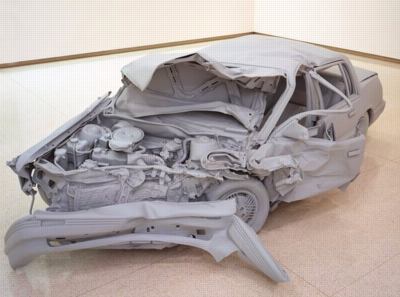
I don’t even know where to begin. Maybe I should feel sorry for Mr. Deller, who has clearly been misled by scurrilous legions of museum no-goodniks to think about something as irrelevant as the experience of visitors to his exhibition, and what they might take away from encountering his work. If only he’d painstakingly recreated that burned out car in fiberglass; if only he’d depicted the disasters of war in a series of aquatints, or perhaps a nice, moody painting; if only he’d interviewed his “experts” on camera, so he could project their giant, talking heads on the wall, or put them on a bunch of televisions in front of a bunch of chairs; or maybe he should have instructed his experts to read something, anything, maybe see if they can count to a million. He might have been onto something.
As for Mr. Johnson, I would suggest that if you’re an art critic who finds himself with “no way to make any critical or evaluative judgment” about a work by an artist awarded his country’s top art prize by its top art museum, which was commissioned and shown by three museums, which is compared to one of the most prominent art movements of the last fifteen years, a movement which was just the subject of a giant exhibition at another not insignificant museum in town, you might consider finding another beat.
11/09 UPDATE: Or not. Writing about her visit to the stored Serra for the journal Afterall, Mary Walling Blackburn reports that it is not Bellamy after all. Bellamy is currently in England. There is, in fact, an I-beam on-site spray-painted “Bellamy,” [visible in Nathan’s photos below], but that is apparently not a nametag or some such. [In fact, the beams are used for stabilizing the pieces during transport. They can be seen in use in Art21’s series of installation photos for Joe at the Pulitzer Foundation in St. Louis.] So that begs the question: what Torqued Spiral is it, then? Inquiring minds might want to ask the artist next time they see him. I know I will.
The story of the Richard Serra sculptures stored along the Bronx waterfront is filling out, thanks to Nathan Kensinger, who went with Jake “The Dobster” Dobkin on their recent photoblogging expedition. A couple of highlights:
Anyway, Nathan’s got much more to reveal, and some sweet photos to accompany it. Previously: Serra from the block